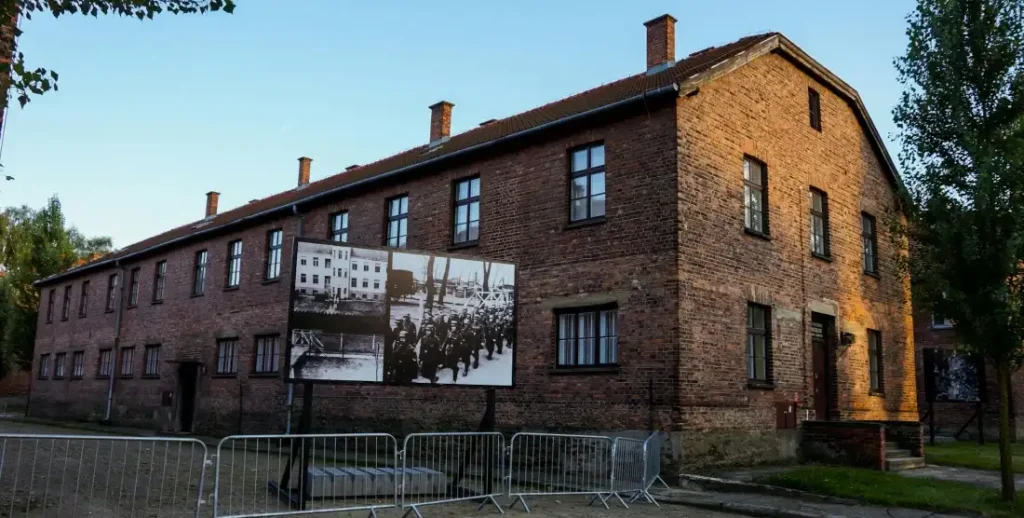Visiting Auschwitz is a powerful and emotional experience that offers a deep insight into one of history’s darkest chapters. The Auschwitz sites include many significant locations that provide a comprehensive understanding of the horrors that occurred there. Below, you will find detailed information about the key sites and buildings you will encounter on an Auschwitz tour.
The buildings at Auschwitz are solemn reminders of the systematic cruelty inflicted upon the prisoners. Each building has its own history and purpose, from administrative offices to barracks and torture chambers.

The Auschwitz Museum is the main entry point for visitors. It serves as a memorial and educational center dedicated to preserving the memory of Holocaust victims. The museum features extensive exhibits that include photographs, the personal belongings of the victims, and documents that provide a chilling account of the events that took place. A visit to the museum sets the tone for the tour, offering historical context and a deeper understanding of the atrocities committed at Auschwitz.
Block 4 houses exhibits detailing the extermination process. It includes displays of Zyklon B canisters used in the gas chambers and photographs documenting the brutal reality of mass exterminations. This block also contains a model of the gas chambers and crematoria, providing a visual representation of the genocide machinery.
Block 5 showcases personal belongings seized from prisoners upon arrival. The exhibits include suitcases, shoes, eyeglasses, and other personal items, serving as a haunting reminder of the individuals who suffered and perished in the camp. This block humanizes the victims by illustrating the sheer volume of personal effects left behind.
Known as the “Death Block,” Block 11 was used for punishment and torture. The basement housed dark cells where prisoners were kept in inhumane conditions. The block also features the “standing cells” where prisoners were forced to stand for days without food or water. Block 11 serves as a stark reminder of the brutal methods of control and punishment used by the Nazis.



The gas chamber at Auschwitz I is a reconstruction that provides a chilling representation of the mass exterminations carried out. Visitors can enter the gas chamber and see the stark, concrete room where countless lives were taken. This site is one of the most harrowing and significant parts of the tour, offering a direct encounter with the horrors of the Holocaust.
The Gate of Death at Auschwitz II-Birkenau is one of the most iconic and haunting symbols of the Holocaust. This infamous gate is where trains carrying prisoners entered the camp. The tracks lead directly to the selection ramp where prisoners were divided between those who would be immediately sent to the gas chambers and those who would be forced into labor. Standing at this gate offers a profound sense of the scale and logistics of the Nazi extermination plan.

AUSCHWITZ TICKETS

TRAVELER INFORMATION
Auschwitz is open to visitors year-round except for January 1, December 25, and Easter Sunday. The visiting hours vary by season to… see more

AUSCHWITZ INFORMATION
